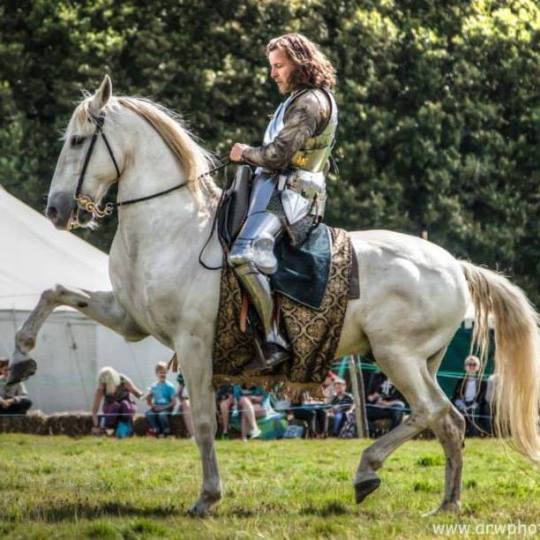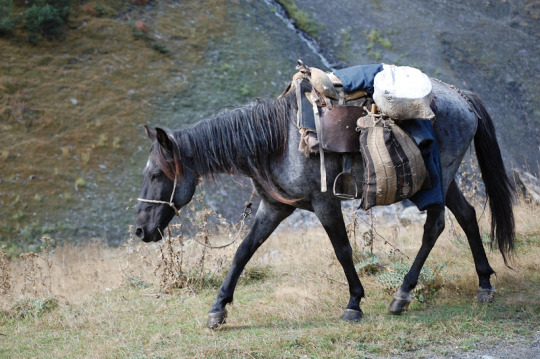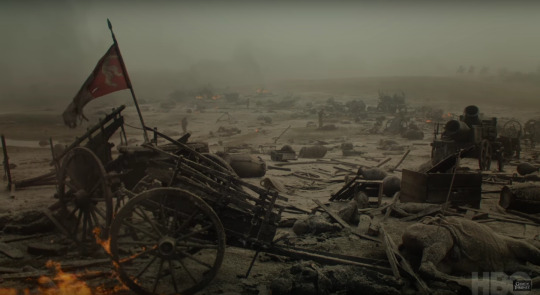A Writer's And Worldbuilders Advice Blog, For All Things Martial Inbox Open For Asks, Requests, And Submissions
Last active 60 minutes ago
Don't wanna be here? Send us removal request.
Text
Well, it's not every day I write something on the topic of Military Worldbuilding which doesn't have to do with the 12 Worlds.
So, in celebration (and because all my other ideas for this blog have been gathering dust in the back of my mind for several months), I think I'll put this one here on AAA too
Dunking On Some Fools
In Which I Whine About Star Wars, And Talk About Multi-Role Platforms (Mostly The Latter)
Yes, the none-awaited sequel to this post a few days ago has arrived! If no one reads this, I don't think I'd mind, but I am tagging @coffeexafterxmidnight since you asked and @theprissythumbelina because I vaguely recall you reacting positively to something star wars related a while ago.
Anyhow, more below the cut;
Now, the way I see it, a lot of the pro-LAAT arguments come from the perspective that using 'multi-role' vehicles, or 'platforms' to be technical, is inherently better than splitting those roles across multiple platforms in unison. These two comments, for example;
---


---
Now, I'm gonna start by saying that while I am a very big fan of most multi-role platforms (F-35 my beloved I never doubted you), I am of the opinion that the 'Low Altitude Assault Transport', or LAAT, is absolutely not a good example of one, and I'm here to explain why.
"Multi-Role' VS 'Multi-Form'
Basically, the way I see it is that it's a good idea to design one or a small number of platforms to be able to conduct a variety of missions as long as the ability to actually do that doesn't require making absolutely detrimental sacrifices in that platform's ability to fulfil its core functions.
Now, what does that look like?

This is a Nimitz-class nuclear powered aircraft carrier of the United States Navy, and in my opinion such platforms are an excellent example of what it means to be multi-mission right.
The base, structural form of aircraft carriers is basically a flat deck, a hangar beneath it, and all the engineering, navigational, and communications gear needed to make it go places and do things.
And what can an aircraft carrier do? Anything, depending on what you put on it.
Fight for and win air superiority? Launch fighters.
Bomb something? Send up some strike aircraft.
Hunt submarines? Sic anti-submarine helicopters on them.
And you don't even need to change the ship itself! There's not really a structural difference between a carrier that can 'do' air warfare VS one that can fight surface targets, and the same hold true in other domains. Modern missile cells on ships, or launch rails / bomb bays on aircraft, can store and fire many types of ordnance (if you've designed them to), allowing the platform with these systems to be easily re-tasked between various missions.
The exact opposite of this fortunate state of affairs can be seen when improving a platform's ability to do A actively weakens its ability to do B. This often happens when the structural components needed to carry out one task take up weight or volume while providing nothing to the platform's ability to do another.
Such as, say, having to have both a large transport compartment and all the lasers in the galaxy.
Where Does The LAAT Fit?
Now, to return to the vehicle that started all this.

I believe the LAAT is a flawed concept, and my proposition to replace it while retaining a similar level of 'orbit to surface assault' capability would be to divide the roles of 'fire support' and 'troop transport' between two separate platforms. Frankly, I'm more than a little sceptical of this whole doctrine to begin with, but I'm not gonna get into that.
The main problem here is weight. It shouldn't be controversial to say that in the air more than any other domain, weight is at an absolute premium, and speed is often your best protection. Just by stripping the basic hull of either the armament or the troop bay would give the resulting craft a good boost to speed or range, especially if you take the effort to make a more aerodynamic hull form. Alternatively, you could use the saved weight to cut back on thrusters / repulsors, or boost carrying capacity, armament (as if it isn't already armed enough), or shielding / armour.
A second point that I think is also relevant is that, by splitting these two conflicting missions and design requirements into different aircraft, you can now get away with adapting the new platforms into even more roles which their now non-contradictory frames might be better able to handle. The troop transport can also haul cargo or vehicles without wasting capacity on weapons, and on the flip side the gunship can carry out independent attack missions without subtracting from the transport fleet.
With these arguments made, though, I'd like to take some time to properly shoot the two YouTube commenters who started this right between the eyes. Their takes, I think, are dumb.

Take 1; 'Sequencing Bad, Actually'
Okay, well.
First of all, surely the idea of 'easily anticipated stages' applies equally to the approach best described as 'mass identical waves coming right at you'? Like, just using the LAAT is no less predictable the split idea? Military operations are always broken up into clearly defined stages for a reason, which brings me to my next point.
Let's say you send in the LAAT in your first, second, and third waves, as you'll need to because there's no way in hell you're getting a 'large' amount of troops down at once. The first wave will take the most fire since the defenders haven't been suppressed yet, and since the troop transports and gunships are the same, losing gunships while attempting to clear defences also condemns their passengers to dying with them.
Unless you mean to tell me you intend on dropping troops while the enemy's guns are pointing right at you. In which case, please watch Saving Private Ryan Opening Beach Scene on Holo-Tube.
On the other hand, breaking up the mission into discrete and sequential stages, and splitting attack and transport craft into separate roles, allows you to cut back on risk massively. Take the LAAT hull, leave the droops on ship, and replace all that weight with even more lasers (but preferably rockets or something), and now you have a craft for that 'first wave', which can hit defences with speed and firepower without risking a single ground trooper's life. Then, once and only once the Landing Zone is ready, you can send in the ground pounders to do their work.

Take 2; Muh Multi Role
Ah, screw me I guess.
Look, first of all, who the hell 'needs; to do so? Like, the video and commenter made a point of saying that there very much was no need to slap weapons on the blackhawk or Mi-8, so what exactly are you trying to say??
Also, the point about multi-role fighters is so stupid it spawned this whole post. In the modern day, where the divide between ground attack and air combat capabilities are summed up quite well by 'stick the bloody weapon on a launch rail and chuck it from beyond the horizon', the structural concessions you need to support both roles are much lower than having to accomodate, I don't know, a vacuum pressurised passenger compartment, and a absolute crap ton of lasers. So, yeah! You can't compare the two!
And with that... I don't feel like trawling through the video for more dumb takes. So, Arch out.
7 notes
·
View notes
Text
Knights, Horses, and the Medieval Battlefield
This post is a focused version of a larger post, many thanks to Arch for allowing it here!
The Medieval Horse
During the middle ages, horses were not actually defined by breed. They were defined by the work the horse was suited and trained to preform. There were five main types of medieval horses.
The Destrier
Also called The Great Horse for its size, strength, and price, this horse was the renown mount of knights and kings in battle. These horses were highly trained for battle, and could be taught to do such things as striking out at soldiers in front, kicking at soldiers from the back, and even leaping all four feet in the air to protect it’s rider. They would wear the most armor, and these horses would likely be closest in appearance to the modern Andalusian.

^‘The Modern Knight’, Jason Kingsley, and his horse Warlord.
The Courser/The Charger
A lighter horse than the destrier, the courser is also a warhorse, highly trained and well-bred, but a little less expensive. A knight might not be able to afford a destrier, especially as a minor knight, but every knight should have a courser. The Spanish Jennet is the epitome of the medieval courser, and in fact was the horse used by Richard II. According to Shakespeare, the horse’s name was White Surrey, although other sources claim the horse was Roan Barbary, and was a Barb or Berber horse*.
*Bought from Spain and likely a cross of Spanish and African blood, so a Jennet. But Jennet was also a classification of a horse type in those days, so, sources are muddled.

^Barb/Berber horses in traditional garb
The Rouncey
The ‘average’ horse of the time, this horse was used mainly for riding, but could sometimes be ridden into battle if trained properly, and were the preferred horse for lower-class fighters such as archers or men-at-arms. As it described a riding horse, these horses came in all shapes and sizes, from all lineages, and in all colors. In peacetime they could be used to draw carriages or work fields. A proud and expensive destrier would never be caught pulling a plow.
The Palfrey
A highly-bred, highly trained horse, this horse is a high quality riding horse known for a specific gait, called an ambling gait. This horse had a special pattern of moving its feet that gave the rider a considerably more comfortable ride than the traditional 4 gaited horse. After the middle ages, these horses almost disappeared, only to be recovered in the Americas in the form of 'gaited’ horses such as the Paso Fino, the Rocky Mountain Horse, the Missouri Foxtrotter, and the Tennessee Walking Horse. The Icelandic horse has also retained the special Tölt gait that may* be the exact gait of medieval ambling horses.

^A fine lady on her steady palfrey
The Packhorse
This describes any kind of horse, usually a rouncey, that is used not for riding but to carry supplies. Packhorses could also be mules, donkeys, and ponies, so long as they could carry weight for long miles. These were supply horses, carrying food, weapons, tents, whatever else may be needed.

^Pack horses can be strung together in long 'strings’ of horses for transportation, or a single packhorse may follow through herd instinct. Packhorses are also rideable, if you want to give the main horse a rest.
Horses on the Battlefield

Now, if you have seen the above scene, you have probably seen The Hollow Crown, a historical drama with a few late Medieval battle scenes. In these scenes, knight clashes against knight in a furious charge, leading to pitched battles on horseback. I’m not going to say that never happened, but by and large cavalry was directed against infantry, not other cavalry, or used to conduct maneuvers requiring speed and surprise, such as a charge, a circling maneuver, a bluff retreat and most importantly, to chase down routing enemy soldiers.

A knight on horseback was most effective in close quarters against unmounted and surprised soldiers. Lances were the primary weapon, allowing a mounted warrior length to spear and batter down at enemies, and a sword was secondary, as it had a shorter length, and would be used if a mounted warrior was surrounded by infantry or in battle against another knight. Throughout the medieval period, horses sometimes were removed from the fight all together due to unfavorable land, and kept in reserve to either help the army flee or to chase down the fleeing enemy.

Somewhat realistically for facing an infantry, the Rohirrim here are wielding lances, which are a powerful tool of any charge. Unrealistically, they are instead using their horses as orc plows, which is… a choice. A charge is the cavalry’s best weapon, combining the horses’ speed, power, and training to create a wall of death and hooves. A good charge can split an infantry line, disrupt command signals, and even send the poorly-trained soldiers into a panic. A bad charge can end with the knights surrounded and pulled from their saddles to be stabbed and stomped into the ground. Such was medieval warfare.

#submission#Tags: Arch's Armed Advice#AAA:Communiques: Com. 1#worldbuilding#military worldbuilding#writing#writing resources
34 notes
·
View notes
Text

What Is War?
Welcome to the introductory Article of Setting Conditions. Today, we shall attempt to answer one of humanity's most ancient questions; what is war? It might seem a trivial question to answer, but we suggest, dear reader, that understanding the varied forms and characteristics that war can take might help you develop and understand the role 'war' and conflict at large could play in a fictional setting.
But First, Why 'War'?
A question both for ourselves at Arch's Armed Advice, and, surely, for you who read it. Conflict and those organisations, people, technology, and impacts associated with it have appeared in literature and writing throughout history, but the specific role that War can play in one's own works can obviously vary. Some might anchor their whole project on a conflict, exploring it in minute detail from every angle; for others, military imagery and associations may simply serve to provide an interesting background for stories focused on other subjects. While the position a work finds itself on within such a spectrum will affect how much effort its writer will likely put into developing this portion of their setting, we here at AAA hope to provide a resource that all writers can learn something from, even with our own proclivity for the more in-depth examples. 'Getting it right', even for works which do not center on war or the military, adds credibility to those stories and their writers, and eases the reader's task of suspending disbelief and immersing themselves within the story and its setting.
What is War... In General?
A situation in which two or more countries or groups of people fight against each other over a period of time - The Oxford English Dictionary
The definition above and others like it both useful and generally accurate, covering most of what might spring up in one's mind when one thinks of 'war' in fiction. While AAA will certainly seek to help our readers develop believable, plausible military conflicts and the entities engaged in them within their Settings, we believe that a crucial step in doing so is to expand our understanding of 'war' beyond the most overt acts of violence and combat.
One Way, Or Another
One of our missions in producing this blog was to open Writers' eyes to the diverse ways that war and its associated topics can play a role in their setting and works, and part and parcel with this is expanding writers' perspectives on the forms that this subject can take. To do this, we must venture beyond 'Great Power Conflicts' and 'Plucky Rebels VS. Evil Empire', into conflicts bearing more resemblance to the Pig War of 1959, the Cod Wars, and others of a less conventional nature which nonetheless may open our eyes to the base principles of War. To understand what connects these varied manifestations of warfare, and to develop your own unique take on conflict which best suits your own work, it helps to know some of the most basic terms and theories behind War. The most cliche example, and thus the one we at AAA will use anyways, is to quote the famed military theorist Clausewitz's old maxim; "War is the continuation of policy with other means..." Countries, demonic cults, and other groups besides may, for one reason or another, find that their interests would be best served by undermining those of another group; war, thus, doesn't exist for its own sake, but only comes about because actors choose to engage in it. Developing the political machinations that underly the competition which, in some but not all cases, may escalate to conflict, is a subject all its own and one deserving of great attention. Plainly obvious disconnects between the interests and stakes of the (fictional parties involved, and the conflicts that us as writers force them to engage in, are among the most glaring weaknesses in any work which might have them. To fix such an issue, we suggest that a writer might take one of two courses; they may decrease the 'intensity' of their existing conflict or competition to something more reasonable, or they may develop these warring parties and their relationships to the point that such intense conflict is not just reasonable, but practically inevitable. In reality, one will likely have to commit a little bit both.
Conflict Vs. Competition
While it might seem strange for Arch's Armed Advice to advocate for the inclusion of non-violent conflicts and competitions in our readers' writing, we believe that their presence can only add value to any open wars that may occur in the same works, even without considering how interesting they can be on their own. To add nuance and believability to a conflict, it can be helpful to develop the pre-existing tensions between the parties about to embark on it, presenting specific instances where their interests had previously been in opposition. What, precisely, those interests will be, is entirely up to writers themselves, and we at AAA will likely not be able to provide so much aid in that highly contextually dependent field. We will, however, attempt to provide what advice we can when it comes to developing some of the actions and decisions that these competing actors might make, and the myriad factors they might have to consider in making them.
Conclusion
War is many things, but for us at AAA it is a subject that we hope many more writers might turn to exploring and developing on their own terms within their works and settings. Having done our best to define that most complex topic, we hope that over the course of our future publications we will be able to impart some useful, applicable knowledge on our readers on their creative journeys.
The_Archmagos
#writing advice#worldbuilding#writeblr#writing#writing resources#tags: arch's armed advice#AAA: Setting Conditions: Art. I
25 notes
·
View notes
Text
Worldbuilding Wednesday Prompts
Hello readers! A key part of this blog's hopes to bring about an appreciation for and the good development of 'military' related Worldbuilding is to give writers a platform to showcase that side of their Settings, and provide some scaffolding with which they can use to develop it as far as they want. As part of that whole plan, we'll be partaking in Writeblr's weekly Worldbuilding Wednesday, creating prompts to allow you, dear writer, the chance to do both of that! This week, your Prompt is:
Tell us about about a the "Aggressor" of a major conflict which has taken place in your Setting or Story. Why did they choose to escalate to violence? What did they hope to achieve out of the war, and how did they envision that fighting one would help them get it? Were they ever actually likely to succeed, and how accurate were their predictions when it came to their odds of success compared to how it turned out?
#worldbuilding wednesday#writeblr#writing resources#writing#Tags: Arch's Armed Advice#AAA: Worldbuilding Wednesday: Prompt 1
8 notes
·
View notes
Text

An Overview Of Content
Hello to our esteemed readers! As this blog stumbles into the wild world, we believe it would be useful to define the present scope of what we hope to make out of this whole project. At the moment, this blog's main posts will be split between the following;

The 'primary' content of this blog. Planned and hoped to be a monthly exercise, the Standard Issues will comprise of our answers to questions we receive from you, our readers. These will likely be the most in-depth of our posts, hence their relative scarcity to give us time to put in our best in research and thinking. The blog's inbox shall always remain open to any suggested topics for future Standard Issues.

The subject of military-esque Worldbuilding and writing is a broad one indeed, and we do not wish to 'clutter' the reading of the Standard Issues with certain pieces of information which we believe have a broad use across the topic, or which may help provide a baseline of understanding towards the former's more in depth coverage. Setting Conditions will be the platform for such content.

The final currently envisioned piece of this blog. As just a small part of this great ecosystem of Writeblrs, we hope to play our part in fostering an open space for the creation and celebration of everyone's creative works. In line with that, we will be accepting submissions from our esteemed readership of advice for fellow writers, their own works one may wish to share, or anything else we deem fitting the broader themes of this specific blog and that community-centred goal.

The creation of this blog, like the creation of all things, is a continuous experience of trying, discovering, and learning new things. Just as we hope to develop and expand our own knowledge and experiences to provide you all a service we can be proud of, the form and shape of our content is always subject to change and growth. If our esteemed readers wish to provide any suggestions on that front, our inbox remains open to all comers.
Goodbye, good day, and good luck to you all! May your inspirations last long and serve you with distinction.
#Tags: Arch's Armed Advice#AAA: Standard Issues: Vol. 0 | Iss. 0 | [Intro.]#AAA: Setting Conditions: Art. 0#AAA: Communiques: Com. 0
12 notes
·
View notes
Text
Welcome!

To the introductory issue of Arch's Armed Advice, here on Tumblr!
Run from this account, this project hopes to offer creatives and Worldbuilders everywhere only the finest, most useful aid and support when it comes to creating works related to militaries and warfare. In that, we hope to primarily direct our energies into the field of Worldbuilding, providing advice and support when it comes to crafting the lore and background of your setting.
At the moment, what we're tentatively titling Volume I should cover three Issues. The first, Logistics And Your Settings, is already spoken for, but the remaining two are open for now! If you have any topics in mind, do reach out and let us know. We'd love to hear from you!
- Arch
#Tags: Arch's Armed Advice#AAA: Standard Issues: Vol. 0 | Iss. 0 | [Intro.]#writing resources#writing#worldbuilding#writing advice
15 notes
·
View notes